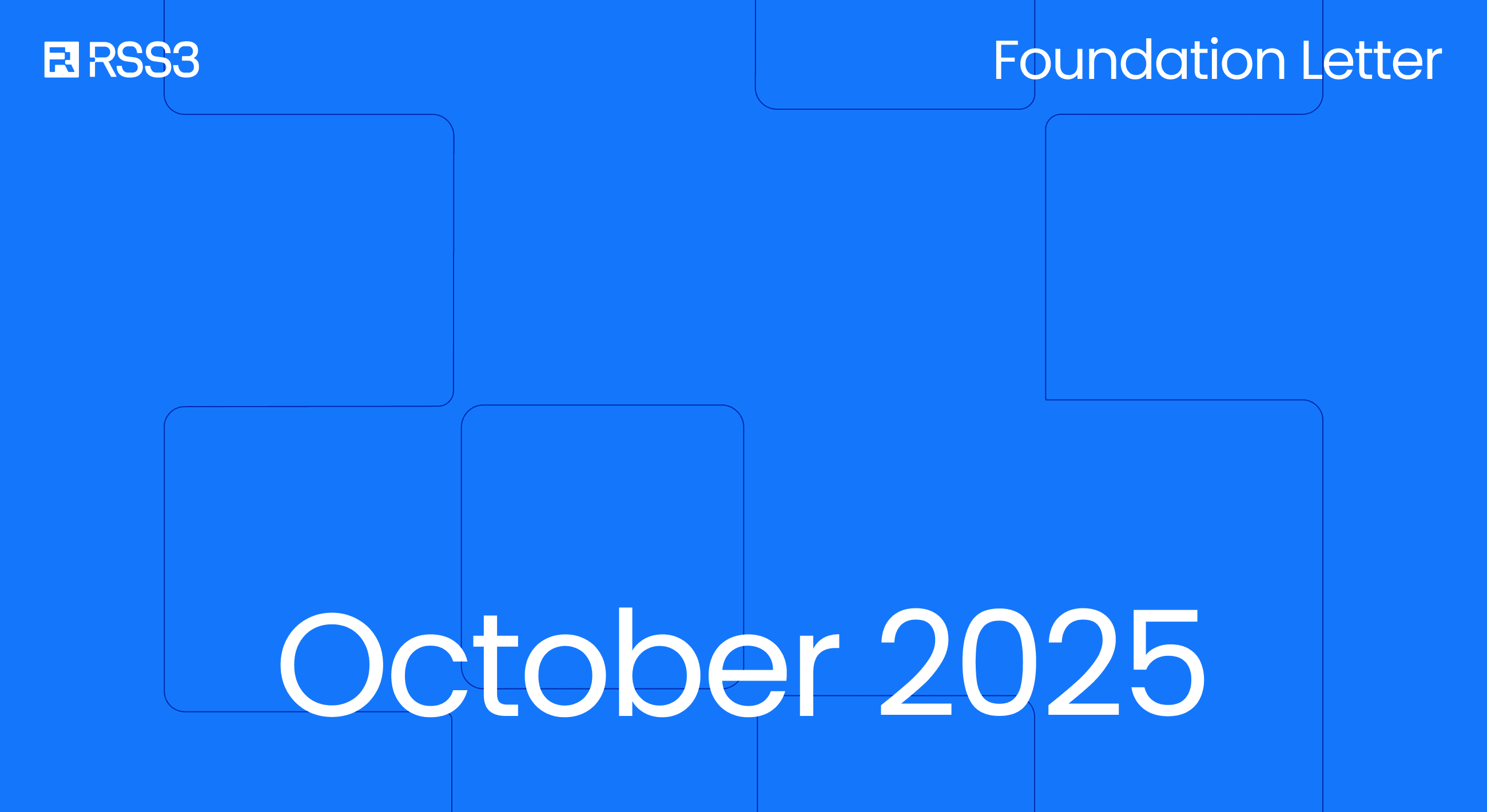Release Date: October 28, 2024
Contributors: Henry and the RSS3 Core Dev Team
It’s an exciting day for the RSS3 Network!
We’re rolling out RSS3 Node v1.1.1, and this version is packed with awesome features, new integrations, and some cost-savings for RSS3 Node Operators.
Let’s break down what’s new and why you should care.
For Node Operators: Lower Costs, Better Performance
With RSS3 Node v1.1.1, we’ve placed a major focus on cost reduction and improving the overall experience for Node Operators. These new features and optimizations will streamline operations, lower costs, and make managing Nodes easier than ever.
- Developers benefit from smoother, faster interactions with the RSS3 network, ensuring that your applications run efficiently and scale easily as the network grows. The optimizations and data handling improvements will streamline your development process.
- Node Operators will enjoy lower costs, enhanced stability, and better control over your infrastructure. The automated features, like Data Trimming and performance enhancements, ensure that you can run a leaner, more effective network without sacrificing rewards.
In summary, RSS3 Node v1.1.1 brings:
- Lower storage costs through automated data trimming.
- Better performance with reduced resource usage and bug fixes.
- Improved management with an interactive Node State Map for real-time control and monitoring.
Data Trimming: Automatic Cost Savings
One of the key new features in this release is Data Trimming. This function automatically trims excess data from your Nodes, significantly reducing the amount of storage you need without affecting any rewards. For Operators running multiple workers, this means substantial cost savings over time, as you’ll be using fewer storage resources while maintaining Node efficiency.
The best part? This process happens automatically, so there’s no manual intervention required.
- For developers, this means more efficient data handling in your applications, reducing the need for manual data management.
- For Node Operators, it reduces the storage load without any extra configuration, all while ensuring rewards remain unaffected. The trimming process is entirely automated, so you can focus on coding or scaling operations, not on managing storage.
Performance Optimization & Bug Fixes: Smoother Operations
In this version, we’ve implemented a variety of performance optimizations that make the RSS3 Node run faster and more efficiently. These improvements reduce the overall resource consumption of each Node, meaning your infrastructure can handle more with less, further driving down operational costs. On top of that, several bugs have been fixed, especially those that could have impacted Node stability. This results in a smoother, more reliable experience for Operators, ensuring that your Nodes remain online and functional with fewer disruptions.
Node State Map: Enhanced Transparency and Control
Managing Nodes is easier now with the introduction of the Node State Map. This interactive feature, introduced in line with REP-33, gives Operators a clear, visual way to monitor and manage Node states.

- For developers, this helps you monitor real-time performance and optimize resource use in your code.
- For Node Operators, the Node State Map allows Operators to modify states directly from the dashboard. This added transparency and control means you can fine-tune your operations with minimal hassle, improving both the efficiency and stability of your Node.
Upgrade or Miss Out: One-Month Grace Period
If you’re running a Node, now’s the time to upgrade. Simply follow the guide here.
You’ve got a 1-month grace period to switch to RSS3 Node v1.1.1 before your Node stops receiving rewards.
Our NetworkParams contract outlines the minimum version required to participate in the network and continue receiving rewards. In this latest update, the contract has also been enhanced to utilize a timestamp in network_start_block which specifies the minimum coverage needed for workers to be considered healthy. This ensures that only up-to-date Nodes operating within the required parameters are eligible for rewards, promoting a more efficient and reliable network.
You can view the updated contract details here.
That’s a lot of coverage, and there’s even more coming in the future. This upgrade makes it easier to build across different chains and access the full potential of the Open Web.



